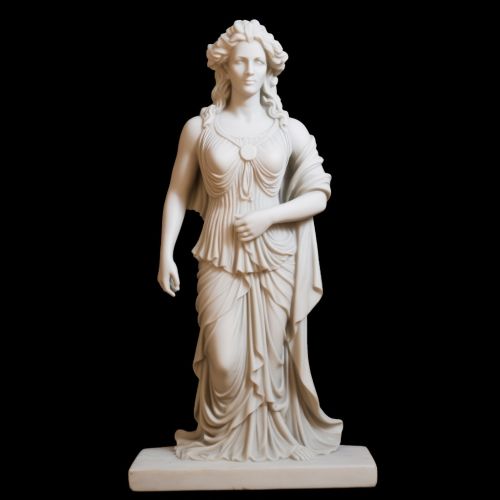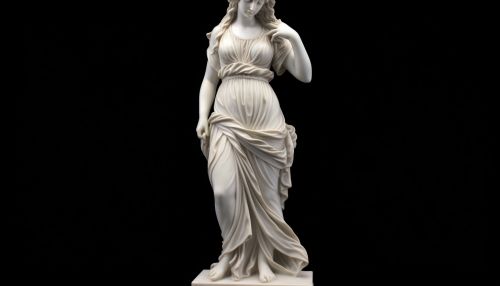Aphrodite
Origins
Aphrodite is an ancient Greek goddess associated with love, beauty, pleasure, passion, and procreation. She is one of the twelve Olympians, the principal deities of the Greek pantheon. Her Roman equivalent is Venus. Aphrodite's major symbols include myrtles, roses, doves, sparrows, and swans.
The origins of Aphrodite's myths are difficult to reconstruct, as they are significantly influenced by later Greek thought. However, her origins could be traced back to prehistoric Greece. Aphrodite's main cult centers were at Paphos and Amathus on Cyprus and in Corinth on the Greek mainland. She was syncretized with numerous local goddesses and her worship spread throughout the Mediterranean region.
Birth
There are two major myths concerning Aphrodite's birth. According to Hesiod's Theogony, she was born when Cronus severed Uranus's genitals and threw them into the sea; from the sea foam (aphros) arose Aphrodite. Hence, Aphrodite is of an older generation than Zeus.
In the Iliad, Aphrodite is described as the daughter of Zeus and Dione. This version of her myth aligns Aphrodite more closely with the Olympian gods and distances her from the older deities associated with the earth and the sea.
Aphrodite and the Trojan War
Aphrodite played a key role in the events that led to the Trojan War. She was one of the goddesses who was offended by the Judgment of Paris, a contest between Hera, Athena, and Aphrodite to determine who was the fairest. Paris, a prince of Troy, was chosen to judge. Aphrodite offered him the most beautiful woman in the world, Helen of Sparta, who was already married to King Menelaus. Paris accepted Aphrodite's bribe, leading to Helen's abduction and the onset of the Trojan War.
During the war, Aphrodite often intervened on behalf of her son, the Trojan prince Aeneas. When Aeneas was wounded, Aphrodite saved him from death. She also protected Paris, who was often depicted as a weak and unskilled warrior.
Worship and Cult
Aphrodite was widely worshipped throughout the Greek world, but her most important cult sites were in Cyprus, Cythera, Corinth, and Athens. In Athens, Aphrodite was worshipped in the form of Aphrodite Pandemos, or "Aphrodite of all the people". This form of the goddess represented communal and civic harmony.
Aphrodite's cult was also closely associated with the sea, and many of her sacred sites were located near water. Her worshippers offered her gifts of honey, olives, and incense, and her festivals were occasions for music, dancing, and revelry.
Iconography
Aphrodite is frequently depicted in ancient Greek art, particularly on Attic red-figure pottery. She is often shown nude or partially nude, emphasizing her role as a goddess of beauty and sexual desire. Aphrodite is often accompanied by symbols of love and beauty, such as roses and myrtles, and animals associated with her, including doves, sparrows, and swans.


Legacy
Aphrodite's influence extended beyond ancient Greece and Rome. In the Middle Ages, she was often conflated with Mary Magdalene, and in the Renaissance, her mythology was reinterpreted through the lens of Christian morality. In modern times, Aphrodite continues to be a popular figure in Western culture, representing beauty, love, and sexuality.
